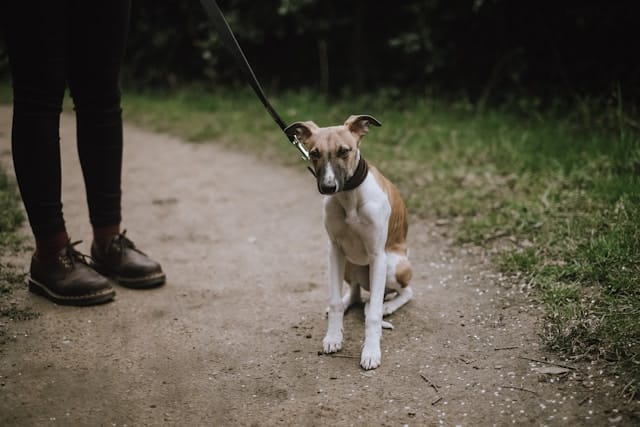What’s the Safest Method to Teach a Child to Interact with a Family Dog?

The bond between a child and a family dog can be an enchanting, enriching experience. The laughter-filled playtimes, the shared moments of tranquility, and the mutual love and respect that develop can have profound, lasting effects on both the child and the dog. However, it’s crucial to ensure that these interactions are safe. Children, particularly the younger ones, don’t naturally understand the dos and don’ts of handling pets, especially dogs, which requires guidance and time to teach them.
In this article, we will delve into the safest ways to guide your children towards a healthy, loving relationship with your family dog. We’ll consider the essential steps necessary, from the initial introduction to training sessions, to fostering a safe environment for them to interact and play.
En parallèle : How to Implement a Cross-Training Routine for a Sporting Breed Dog?
Introducing the Dog to the Child
The initial introduction between your child and the family dog sets the tone for their future relationship. If the introduction is done carefully and thoughtfully, it can pave the way for a harmonious relationship.
Start by discussing the dog’s behavior and temperament with your child. Explain that dogs, like people, have different personalities and moods, and they may not always want to play. Help your child understand that a dog’s body language can signal their feelings; for example, a wagging tail doesn’t always mean it’s playtime.
Sujet a lire : What Are the Best Dog Breeds for Truffle Hunting?
Allow the dog and child to observe each other from a safe distance first. Slowly close the distance as both parties become more comfortable. Always supervise these interactions to ensure safety. Never force the dog or child into an interaction; it should happen naturally and at their own pace.
Training the Dog
Before your child can safely interact with the dog, you must ensure that the dog is well-trained. Dogs can be unpredictable, and even with the best intentions, they might harm the child accidentally or out of fear or anxiety.
Invest time in training your dog. Dogs need to learn basic commands such as sit, stay, come, and leave it. These commands will help you control the dog’s behavior around your child.
Teach the dog to be gentle with their mouth. Dogs play and explore with their mouths, which often leads to bites. Although most of these bites are harmless, they can frighten a child or accidentally cause injury.
Socialize your dog. Dogs that are used to being around people and other pets are less likely to react aggressively or fearfully to your child.
Teaching the Child
While training your dog is crucial, teaching your child how to interact with the pet is equally important. Children can unknowingly provoke dogs with their actions, leading to a harmful reaction from the pet.
Show your child how to pet a dog correctly. Teach them that pets like to be stroked gently, not hit or pulled. Direct them to pet the dog’s back or chest, staying away from sensitive areas like the face or tail.
Teach your child not to disturb the dog while it’s eating or sleeping. Explain that dogs, like people, don’t like to be bothered during these times.
Help your child understand the importance of not teasing the dog. This includes not taking away toys or food or making loud noises that might startle the pet.
Creating a Safe Environment
Creating a safe environment for your child and dog to interact is an essential step in fostering a good relationship between them.
Designate a safe space for your dog. This area should be a place where the dog can retreat if they feel overwhelmed or need some alone time. Teach your child to respect this space and not to invade it without the dog’s permission.
Store toys and food out of reach. Children often don’t understand that dogs have possessions too. Teach your child not to touch the dog’s things without asking.
Ensure that the child and dog are never left alone unsupervised. Even with training and teaching, unpredicted incidents can occur.
Involving the Entire Family
Teaching a child to interact safely with a family dog is not just the responsibility of the parents, but of the entire family. Everyone in the house should be involved in the process to ensure consistency and clarity in rules and expectations.
Have family meetings to discuss the dog’s needs and the child’s responsibilities. This will help reinforce what the child is being taught and will ensure everyone is on the same page.
Assign duties to each family member. This helps in teaching responsibility and ensures that the dog’s needs are met. Duties can include feeding, walking, grooming, and playtime.
Interactions between a child and a family dog can be a source of joy and growth. With careful planning, teaching, and supervision, you can foster a safe and loving relationship between your child and your family dog. Remember, patience and consistency are key in this endeavor.
Encourage Positive Behaviors
As you guide your child in interacting with your family dog, it’s essential to encourage positive behaviors. These behaviors not only foster a healthy relationship between your child and the dog but also help avoid potential accidents such as dog bites.
Reward the child for good behavior. Whenever your child treats the dog gently, follows the rules, or interacts appropriately with the dog, be sure to acknowledge and reward them. This positive reinforcement will make them more inclined to continue such behavior.
Model proper behavior. Children tend to imitate what they see adults do. Therefore, it’s important that you model the correct way to interact with the dog. Show them how to pet the dog gently, read the dog’s body language, and respect the dog’s space.
Discourage negative behavior. If your child behaves inappropriately with the dog, such as teasing, or invading the dog’s space, it’s important to address it immediately. Explain why such behavior is not acceptable and the potential consequences that could result.
Maintaining Safe Interactions
Remember that maintaining safe interactions between the child and the dog is an ongoing process. It’s not something that will be perfected overnight. It requires patience, consistency, and constant supervision.
Monitor interactions closely. Always be present when your child and dog are interacting. This gives you an opportunity to intervene if necessary and to provide guidance.
Review the rules regularly. Regularly remind your child about the rules of interacting with the dog. Doing this will help instill the practices in their memory and ensure that they don’t forget.
Keep the interactions short and sweet. Limit the length of the interactions between your child and the dog, especially in the beginning. This helps to prevent the dog from getting overwhelmed and the child from getting too excited.
Conclusion
Teaching a child to interact safely with a family dog is a rewarding experience that can build a lasting bond of love and respect. It’s a process that requires time, patience, and consistency from both you and your child. With the right guidance, training, and safe environment, your child and dog can establish a harmonious relationship. Remember, it’s about teaching your child to respect the dog’s needs and boundaries, while also ensuring that the dog is well-behaved and comfortable. Through this mutual understanding and respect, the interaction between your child and your family dog will not only be safe but also full of joy and companionship.
